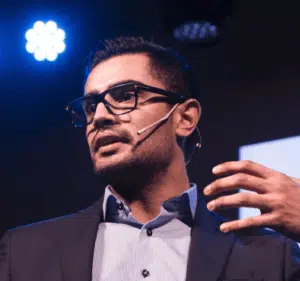TLDR
In this article, we delve into the intriguing story of Ethereum Classic (ETC) and Ethereum (ETH) and unravel the history behind their split.
We will examine why ETH holds the edge, with its strong backing from developers, the Ethereum Enterprise Alliance, and its versatility as a platform for various projects beyond just cryptocurrency.
We will also address common criticisms against ETH, such as concerns about blockchain immutability and the possibility of more hard forks. By the end of this exploration, we hope to provide a comprehensive understanding of why supporting ETH is a wise choice for those who believe in the future of decentralized technology.
“The DAO” comes into being
The entire Ethereum ecosystem operates through the use of smart contracts. In the Ethereum universe, smart contracts facilitate the completion of tasks. These automated contracts guarantee that all actions follow the agreed-upon terms.
Decentralized Autonomous Organization (DAO)
The DAO, or “The DAO,” is an abbreviation and nickname for the Decentralized Autonomous Organization (Decentralized Autonomous Organization). It was a complex smart contract that revolutionized Ethereum. In its essence, the idea behind creating the DAO was that it would become a decentralized fund that would finance all future DAPPS (Decentralized Applications) made in the ecosystem.
It all worked simply. If you wanted voting rights in the questions about DAPPS, you had to buy DAO tokens for a certain amount in Ether. DAO tokens indicated that you were part of the DAO system.
But how would DAPPS be built? Well, the first item on the program was to be allow listed by the curators. After approval, a vote would take place. If a proposal received 20% approval, it would have managed to arrange to fund the start-up.
“Benefits” of the DAO
The DAO’s potential, flexibility, control, and transparency were unprecedented. And people jumped in to get their share of the pie. After 28 days, one had accumulated the currency unit Ether to a value of 150 million dollars in a so-called “crowd sale.” This corresponded to 14% of the total supply of all Ether tokens issued until then.
You may think this sounds all good, but you are probably wondering how to get out of the DAO. What happens if some DAPP you don’t like gets approved? Can you get out of the DAO, then?
The Split Function
A kind of exit door called a “split function” was constructed to manage this. Using this feature, you could get back the Ether that you had invested, and if you wanted to, you could create your own “child DAO.” You could split everything up with multiple token holders, create your own “child DAOs,” and start with proposal approvals.
The only requirement in the contract was to hold onto your Ether for 28 days after you seceded from the DAO before you could start trading and using it. Many saw this potential loophole and pointed it out. But the DAO creators assured everyone that this would be fine. But it ultimately split Ethereum into two currency types – Ethereum and Ethereum Classic.
Read more about: What is Ethereum

The DAO attack
On June 17, 2016, someone exploited this loophole and made off with a third of all DAO funds, about fifty million dollars. In retrospect, it is easy to see how easy it was for the hackers to use this loophole.
If you want to leave the DAO, you can send a request. The sharing function built into the system would then follow the following steps:
- Give Ether back to the user in exchange for them handing in DAO tokens.
- Record the transaction in the ledger and update the internal token balance.
Hacker’s clever plan
What the hackers did was create a repeating, recursive function in the request, so this is how the data-sharing process worked:
Take DAO tokens from the user and give them Ether.
Before registering the transaction, the repeating function caused the code to loop back and transfer more Ether for the same quantity of DAO tokens.
This persisted in real time until Ether, amounting to 50 million dollars, was withdrawn and stored in a “child DAO,” leading to a crisis within the Ethereum community.
Attention: Before we continue, let’s clarify this hack because something “wrong” happened in the DAO and not in Ethereum itself. Ethereum runs in the background, while the DAO runs on Ethereum.
Gavin Wood, one of Ethereum’s founders, said that blaming the DAO hack is like saying that the Internet is “broken” every time a website is down.
In the aftermath of the DAO attack
Even if you couldn’t blame Ethereum for what happened to The DAO, it shook many people’s faith in cryptocurrencies because the price of Ether fell from 20 dollars to 13 dollars.
Even if the hacker earned $70 million in Ether, this amount was still in a “child DAO.” They could not immediately withdraw money because the smart contract stipulated that 28 days would pass before a withdrawal. And it was with this in mind the Ethereum team decided to act quickly. Three possible solutions were considered likely:
- Don’t do anything.
- Soft fork.
- Hard fork.
Don’t do anything
Some argued against making changes as the underlying thinking and philosophy of Ethereum went against this. Don’t forget that Ethereum was intended to be immutable and that the term “code is the law’ was so prominent.
But most were unsatisfied with this and favored using a “soft fork.”
What is a “soft fork”?
There are two ways to update a chain: “soft fork” or “hard fork.” Think of a “soft fork” as a software update that is also backward compatible. What does this mean? Imagine running MS Excel 2005 on your laptop, and you want to open a spreadsheet created in MS 2015. You can still do this because MS Excel 2015 is also backward compatible.
But there is still a difference. All updates from the new version will not be available in the older version. Returning to our MS Excel analogy, we can imagine a feature allowing one to place GIFs in the 2015 version, but this will not work in the 2005 version. So you will see all the text but not the GIFs.
Ethereum planned to do this with the blockchain: make a “soft fork” where you choose whether you want to accept the update. Still, in any case, all users could talk to each other. The idea was to shut down the Ether that had been stolen by ignoring and severing blocks of transactions that had helped the hacker move the stolen Ether.
This was a good idea that most people were on board with. But then a problem arose that led to a completely different consequence. Because carrying out such a “soft fork” would result in a “denial of service” (DoS) attack vector.

Understand what a “soft fork” DoS is
All mining activities are rewarded with “gas” in the Ethereum ecosystem. This is the primary way miners are protected from DoS attacks. Imagine that someone attacks the network by flooding it with transactions requiring complex calculations.
The miners can then sit down to run these calculations. Even if they cannot complete them correctly, they will obtain a so-called “gas” score corresponding to their completed calculations. The more complex a calculation, the more “gas” they receive, and at the same time, the attacker will use a lot of their money to carry out the attacks.
But when the “soft fork” is implemented, the attacker will find a way around all this. Then, the attacker can inject transactions into the network. These will interact with the DAO and force the miners to do infinitely complex calculations for little or no “gas” price without any monetary consequences for the attacker. The attacker can also trick the miners into solving a fake calculation by setting a high “gas” price.
This meant you could not do a “soft fork,” and only one possibility remained: “Hard fork.”
What is a “hard fork”?
The main difference between a “soft fork” and a “hard fork” is backward compatibility. As you implement a “hard fork,” it is impossible to return. Suppose you do not join the updated blockchain version. In that case, you will not get access to the new updates nor the opportunity to interact with users of the new system.
A “hard fork” is supposed to work in Ethereum because a branch separates from the main blockchain at a specific point – in this case, just before the DAO attack. Up to this point (more precisely, block 1,920,000), the old and the new blockchain are the same. Still, soon after the “hard fork” operation, they will separate and become two entities. The new chain was called Ethereum, or ETH.
This “hard fork” was mainly designed to repay the money that had been stolen using a smart contract whose sole task was to “withdraw.” For every hundred DAO, one ETH was given to DAO token holders. This proposal led to discussions in the environment, and it led to a division. Those opposed to a “hard fork” refused to change to the new blockchain and decided to remain in the old blockchain, which they named Ethereum Classic or ETC.
And this is where we get into the battle in Ethereum right now. The fight between ETC and ETH. This dispute is fascinating, both ethically and ideologically. And this is what Gavin Wood – one of Ethereum’s founders – has called “the most important moment in the history of cryptocurrency since the invention of Bitcoin.” So, let’s consider each of these positions in more detail.
What is Ethereum Classic?
Those opposed to carrying out a “hard fork” decided to bet on the original chain, Ethereum Classic.
Why do some people want to stick with the old chain when all major Ethereum players, including Vitalik Buterin and Gavin Wood, moved to the new chain? The answer is differences in underlying philosophy about what a cryptocurrency should be. To begin with, cryptocurrencies were a measure against corruption in the economic environment. The blockchain was immutable because the creators wanted a secure system against human desires.
This is why a “hard fork” feels like cowardice. You are changing the entire chain with a hack that goes against the whole purpose of Ethereum. You prove that people can influence the blockchain. And this thought has many supporters among many cryptocurrency idealists. And some large players, such as Barry Silbert – Grayscale’s CEO- are behind ETC.
However, ETC has several problems that must be addressed.
Issues with Ethereum Classic
The main problem with ETC is the lack of backward compatibility with the Ethereum “hard fork.” All the major players in the Ethereum community have moved to the new chain, meaning that those who stick to ETC will not receive any updates on ETH.
The perfect example is the move of ETH from proof of work (PoW) to proof of stake (PoS).ETC cannot do this because the software does not allow updates.
But that’s not all because there are far more frightening problems with ETC and some border on what you might call conspiracy. Many believe that ETC is an attack on Ethereum itself. What do we mean by this?
The environment was divided and vulnerable after the “hard fork” was implemented. Many say that the anti-Ethereum faction only openly supported ETC to create division. Prominent bloggers such as David Seaman have reported that “ETC is a dodgy chain being promoted in a way that would be illegal if we were talking about a publicly traded company behind it, which it surely will be sometime in the future.”

Ethereum “hard fork,” also called ETH.
ETH results from the “hard fork” and is now considered the new Ethereum. Let’s check the graph:
ETH is the world’s second most expensive cryptocurrency after Bitcoin.
ETH is the new Ethereum, no matter what people say. The original, prominent players are already part of the new system. ETH is undergoing multiple transformations, such as the transition from Proof of Work (PoW) to Proof of Stake (PoS). The creation of ETH aimed to retrieve the funds stolen by the DAO attacker and return them to their rightful owners.
ETH represents much more than suggested on the surface, not least a victory for the Ethereum community. They came together after the worst attack in cryptocurrency history, stayed together, and made something more robust than what they had.
Still, there is a problem with ETH, and according to ETC supporters, it’s all about ideology.
Problems with ETH
As mentioned, ETH goes against the idea that the blockchain should be immutable and the philosophy of “code before the law.” According to anti-ETHere, the “hard fork” was cowardice, and everyone should have accepted the main blockchain anyway.
Another aspect that was mentioned was how someone would be able to know that no other “hard forks” would be initiated in the future based on what someone might wish. And what if more “hard forks” would create more versions of Ethereum? What if there were hundreds of versions of Ethereum at the same time? Wouldn’t this devalue Ethereum quite heavily, and perhaps other cryptocurrencies? Even though a “hard fork” would only be implemented if the majority of the Ethereum community voted in favor of any proposal for a monumental change.
Here are the pros and cons of Ethereum Classic and Ethereum
Ethereum Classic
Benefits
- One has retained the original idea that the blockchain should be immutable.
- Many more significant players have come on board and jumped over to ETC.
Disadvantages
- It does not provide access to the new updates made in the ETH chain.
- The vast majority of the most prominent players have moved to ETH.
- Some consider it an attack on the Ethereum community.
- It attracts many fraudsters.
Ethereum
Benefits
- It grows fast.
- Most of the major players are on the team.
- They managed to return the funds stolen in the DAO attack.
- It is updated all the time.
- This is a strong example of what the Ethereum community can achieve if they come together to solve a common problem.
- ETH is backed by a powerful group of over 200 companies called the Enterprise Ethereum Alliance (EEA). This grouping aims to use blockchain technology to run all smart contracts at “Fortune 500” companies such as Microsoft, JPMorgan, Toyota, ING, etc.
Disadvantages
- It goes against the idea that the blockchain should be immutable.
Why should you support ETH?
Now that you’ve seen the differences between ETC and ETH and caught the broad lines of history, which camp do you support yourself in? If you want to be part of history and support the Ethereum community, it goes without saying that you should stick to the ETH camp. Anti-ETHere uses some arguments that do not hold water. Let’s look at them:
Argument 1: ETH goes against the idea of the blockchain being immutable.
It is true that the “hard fork” defense that was initiated purely formally can be interpreted as something that goes against the idea of immutability. Still, one must look at the situation that led to this. The DAO attack stole a third of the DAO’s stock of Ether, corresponding to 14% of all Ether in the world. After this attack, something had to be done, and the response was a “hard fork,” which was successful. The Ether that the attacker was left with considerably decreased in value, but all token holders were refunded.
Argument 2: This could start several “hard forks.”
This doubt is unfounded. The Ethereum community is decentralized, and it is democratic. You can only make big decisions like this with the majority with you.

Conclusion
Ethereum has made a glorious comeback from what was a horrible disaster. And the solution has worked, and Ethereum will live up to all the expectations people had when it all started. But more importantly, Ethereum’s main strength lies in all the different ways the system can be used. It’s not just a currency; it’s a platform where people can build projects that will dictate the future. If decentralization is the future, then Ethereum will affect all parts of it.
But what does this mean for ETH, ETC? ETH has all major players and developers on its side, and they will go from strength to strength. With the EEA’s support, everything will only get better and better. The trust people determine a currency or coin’s value have in it, and because of all these factors, trust in ETH will only grow.
For most people, ETC will always be the black sheep of the Ethereum family. One knows that ETC is full of fraudsters who only reduce people’s trust in the currency. This will cause the value to be reduced. Are we saying that ETC is going to disappear from the market altogether? No. Are we saying it has no potential? Maybe, maybe not. As Milton Friedman said, the beauty of blockchains is: “Free choice.”
ETC chose to keep the chain and to continue. And this is the beauty of blockchain mechanics and unrestricted capitalism.
The future is bright for ETH, and it will continue to grow. It is living proof of what the Ethereum community can achieve. They had to deal with a crisis and managed this by sticking together and finding an elegant solution. ETH is the future, and if you support Ethereum and believe in what it stands for, you should jump over to the ETH camp.
Ethereum Classic emerged as a result of a hard fork from the initial Ethereum blockchain, with ETC serving as its native cryptocurrency. This hard fork was implemented to address a cyber attack where $50 million was pilfered. Before the hard fork took place, both ETH and ETC shared the identical blockchain history.
Ethereum Classic is an open-source, blockchain-powered distributed computing platform that includes smart contract capabilities. It utilizes a modified version of Nakamoto consensus through transaction-oriented state changes, which are executed on a public Ethereum Virtual Machine (EVM).








